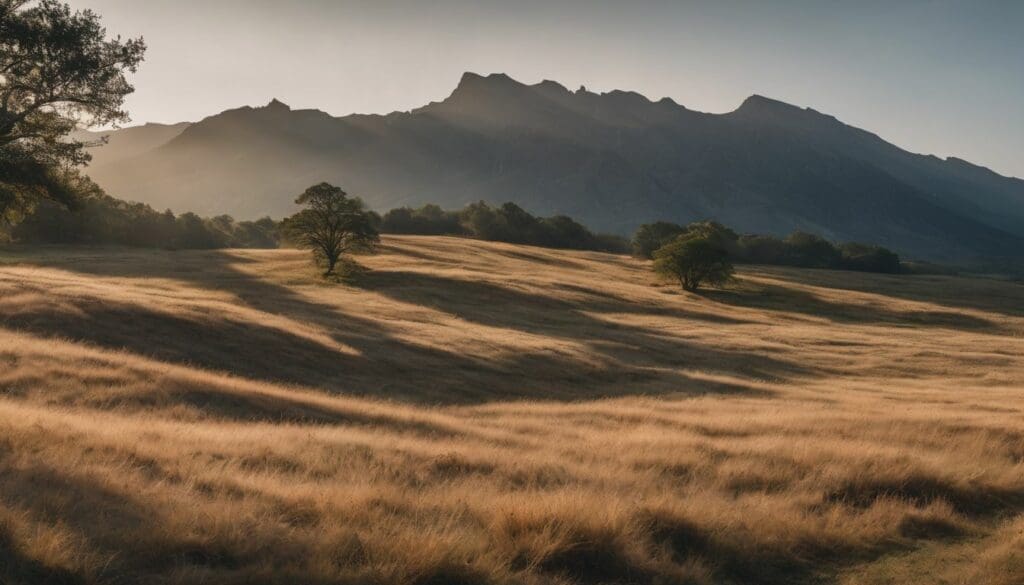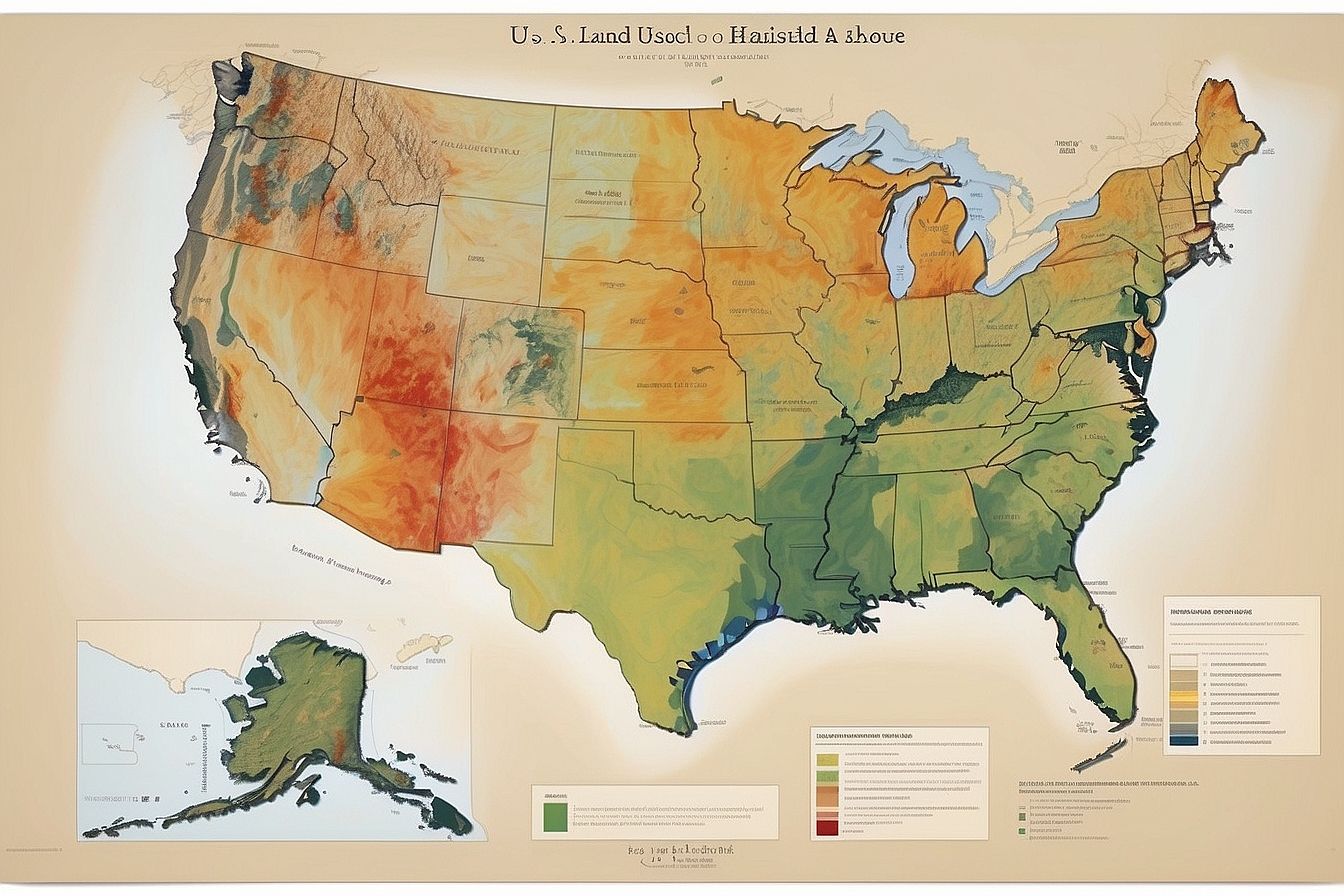Many of us are familiar with the term ‘overgrazing‘, yet its actual impact on our planet might not be so immediately apparent. We’ve witnessed how excessive grazing on pastoral lands can strip away vital resources and put local communities at risk; indeed, a troubling 20% of the world’s grasslands now suffer from this predicament.
Our forthcoming article will delve deeply into the underlying causes and explore the widespread effects that touch both the environment and people’s ways of life. Stay tuned to learn more about how we, as a collective community, can tackle this pressing issue together.
Key Takeaways
- Overgrazing by increasing herd sizes to meet global market demands causes serious damage to pastoral lands, leading to soil erosion and desertification.
- The changing climate brings unpredictable rainfall and higher temperatures, further reducing grazing areas for livestock.
- Population growth in pastoral regions adds pressure on land resources, intensifying competition for water and grazing grounds.
- Economic trends like the expansion of commercial farming push into pasturelands, causing overuse and degradation of these important ecosystems.
- Poor land governance and arms proliferation worsen conflicts over resources in pastoral areas, making it difficult to manage land sustainably.
Causes of Overgrazing in Pastoral Lands
The causes of overgrazing in pastoral lands are multifaceted, including modern drivers of industry change, climate change and variability, demographic shifts, growing industry and economic trends, changes in land governance, and arms proliferation.
These factors contribute to the degradation of rangelands and worsen the plight of pastoral communities.
Modern drivers of industry change
As we observe the landscape of pastoral lands, we’re seeing an undeniable shift driven by modern industry changes. Technological advancements are reshaping livestock management, often pushing for higher productivity at the expense of sustainable grazing practices.
This push for more output leads to intensive use of land that can’t recover fast enough, tipping the balance towards overgrazing and rangeland degradation.
Economic pressures are another major force altering traditional ways of life in these ecosystems. With the global market demanding more meat and dairy products, herders feel compelled to increase their herd sizes beyond what the Sudano-Sahel rangelands can sustainably support.
This results not only in heightened competition for finite resources but also accelerates desertification and soil erosion – challenges that undermine the very foundation of pastoralism.
Climate change and variability
Climate change and variability impact pastoral lands, altering grazing patterns and availability of water sources. The changing climate leads to erratic rainfall, longer dry seasons, and more frequent extreme weather events.
This results in dwindling vegetation and limited access to fresh water for livestock, threatening the livelihoods of pastoral communities. Additionally, rising temperatures can contribute to the expansion of invasive plant species that further reduce available grazing areas.
Livestock overpopulation exacerbates these issues by intensifying pressure on already scarce resources due to reduced vegetation cover from ecological imbalance caused by climate change.
Demographic shifts
Population growth in pastoral areas has led to increased pressure on land resources. As the number of people living in these regions rises, there is a corresponding rise in the demand for grazing land and water for both humans and livestock.
This demographic shift places significant strain on the delicate ecological balance of pastoral lands, leading to overgrazing, deforestation, and vegetation loss.
Moreover, changes in population density can also impact traditional land governance systems. With more people vying for limited resources, conflicts over land use become increasingly common.
Growing industry and economic trends
Transitioning from the demographic shifts to growing industry and economic trends, it’s evident that these changes significantly impact pastoral lands. As industries expand and economies evolve, there is an increasing demand for resources, including grazing lands.
The rise in commercial livestock farming and monoculture crops has led to the encroachment of pasturelands, resulting in overgrazing and soil degradation.
These economic shifts have also spurred technological advancements in agriculture, contributing to increased production but often at the expense of natural ecosystems. Furthermore, global market forces drive a need for more land to accommodate growing supply chains, leading to further pressure on pastoral lands.
Changes in land governance
Changes in land governance affect the management and use of pastoral lands. Government policies play a critical role in determining access to resources, such as grazing areas and water sources.
Effective governance can ensure sustainable utilisation of these resources, benefiting both the environment and pastoral communities. Without proper oversight, overgrazing may occur due to unrestricted access to common grazing grounds, leading to environmental degradation.
Moreover, changes in land governance can impact resource rights for pastoralists, affecting their traditional grazing patterns. Developing strategies that integrate the customary practices of pastoral groups with modern land governance can promote sustainable land use and mitigate the challenges posed by overgrazing.
Arms proliferation
Having discussed the impact of changes in land governance on pastoral lands, it’s essential to address another significant factor contributing to overgrazing – arms proliferation. The uncontrolled spread of weapons in pastoral regions intensifies conflicts and exacerbates security threats, leading to further destabilisation of these already fragile ecosystems.
Arms proliferation not only endangers the livelihoods and safety of pastoral communities but also perpetuates a cycle of violence that hampers conservation efforts and worsens environmental degradation.
As environmentally conscious individuals advocating for conservation and sustainable practices, understanding the detrimental effects of arms proliferation on pastoral lands is crucial.
Consequences of Overgrazing in Pastoral Lands
Escalating security threat, chronic marginalisation of pastoral groups and land degradation are just a few of the devastating consequences of overgrazing in pastoral lands. These issues not only impact the environment but also have far-reaching implications for the communities and economies that rely on these lands for their livelihoods.
Escalating security threat
Overgrazing in pastoral lands has led to an escalating security threat, as competition for dwindling resources fuels conflicts among different communities. The scarcity of pasture and water sources has sparked tensions, exacerbating the risk of violence and destabilising regions where pastoralists reside.
Livelihoods are at stake, and the ripple effects extend beyond local communities, impacting broader areas within these vulnerable landscapes.
Arms proliferation in these regions is also a concerning consequence of overgrazing. The competition for resources has increased demand for firearms, further heightening security risks and making it increasingly challenging to achieve sustainable peace in these environments.
Chronic marginalisation of pastoral groups
Chronic marginalisation of pastoral groups results from their limited access to resources and political representation, hindering their ability to advocate for their rights. Pastoral communities often face discrimination and neglect, leading to economic disparity and social exclusion.
Land governance policies have historically overlooked the needs of these groups, perpetuating their marginalisation. As a result, it is crucial for environmentally conscious individuals and conservation supporters to recognise the impact of overgrazing on pastoralists’ livelihoods.
Moving forward into the next section on “Land degradation and erosion of pastoralism,” we will delve deeper into how overgrazing exacerbates environmental challenges in pastoral lands.
Land degradation and erosion of pastoralism
Land degradation and erosion of pastoralism are pressing concerns for the health of our environment. Overgrazing is threatening the delicate balance of these lands, leading to soil erosion and loss of vegetation cover.
As a result, the once fertile lands become barren, impacting not only the livelihoods of pastoral communities but also wildlife habitat and biodiversity.
Overgrazing contributes to land degradation by reducing the quality and quantity of vegetation cover, making it susceptible to erosion from wind or water. This results in reduced water infiltration rates and increased surface runoff, leading to further deterioration of the land.
Conclusion
In conclusion, overgrazing in pastoral lands poses significant threats to both the environment and the livelihoods of pastoral communities. It is imperative that we address the root causes of overgrazing, including modern industry changes and demographic shifts, to ensure sustainability for future generations.
By implementing effective land governance and promoting sustainable grazing practices, we can mitigate the consequences of overgrazing and protect these vital ecosystems for years to come.
Taking action now is crucial in preserving the delicate balance between human activity and nature in pastoral lands.
FAQs
1. What is overgrazing and why is it a problem?
Overgrazing happens when there are too many animals, like livestock, feeding on the land which can damage the grasslands, especially in places like Sudano-Sahel.
2. How does overgrazing affect pastoral lands?
Too much grazing by livestock leads to less grass for other animals and plants, turning rich lands into bare soils that can’t support life much anymore.
3. Can overpopulation of livestock contribute to overgrazing?
Yes, when there are more animals than the land can feed, this causes overpopulation of livestock which greatly contributes to the issue of overgrazing.
4. Why should we be concerned about commons areas and grazing?
Commons are shared lands where everyone’s animals graze together but if they’re not managed well, these areas get ruined fast from all the eating and trampling.





